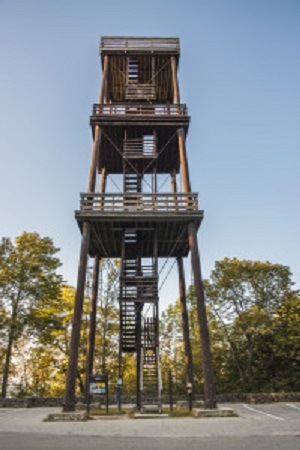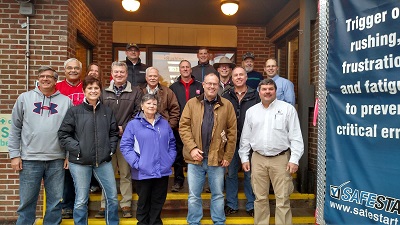|
Hello and welcome back to the newest edition
of my E-Update! A lot has happened here at the Capitol since my last
E-update that I would like to share with you.
Ground Water
One of the most
difficult and urgent issues that I have had to deal with during
my time in the Assembly has been the groundwater contamination
problem in Kewaunee County. It is a complex problem that has
developed over a long period, and there is no simple immediate
fix for the problem. I believe that, through the efforts of many
citizens and government officials of Kewaunee County, we have
the full attention of the Department of Natural Resources (DNR).
While it may not occur as quickly as we may like, I believe that
real progress is being made.
Russ Rasmussen, the Director of the Water Division of the DNR,
has made numerous trips to the area and has organized four
committees charged with addressing various aspects of the
problem. Major announcements pertaining to the work of these
committees will likely come forward in the next few weeks, but I
would like to provide you with background information and the
current status. The committees include the:
1. Short-term Solutions Group: This committee is charged with
getting clean water to those in the county with contaminated
wells. It is vital that we first help those in immediate need
while we work toward the long-term solution to the problem.
Superintendent Nick Cochart of the Algoma School District
recently announced that water would be dispensed from the school
to those in need. This is scheduled to begin in December.
Additionally, the committee is continuing to work with county
government to provide water to residents. Grant money may be
available to help those that need new wells or filters. It
should be noted, however, that in order to be eligible for these
grants it will be necessary to document the problems with these
wells.
2. Sensitive Areas/Best Practices Group: This group is
organizing a set of guidelines for farmers to avoid
contaminating groundwater. The majority of our problems can be
avoided if farmers follow Best Practices’ guidelines for manure
distribution. These involve the timing and methodology of manure
application and the avoidance of spreading near sensitive areas.
Guidelines will be written to avoid spreading near waterways and
sinkholes as well as guidelines for increasing green areas to
act as buffer zones. If changes in state law are necessary to
address the unique geology of our area, these recommendations
will come from this group.
Advancements in technology will likely play a significant role
in the solution to the groundwater problems in Kewaunee County.
Digesters and reverse osmosis systems, which remove the majority
of the water as well as pathogens and nutrients, will likely
appear in the county in the near future.
3. Compliance Group: This group will work to assure that Best
Practices’ guidelines are followed. The leadership of Kewaunee
County would like to implement these recommendations on a
voluntary basis if at all possible. For many years, Door County
has had more stringent rules regarding manure handling, and they
have been effective in avoiding many of the problems we see in
Kewaunee County. This progress has come at a heavy price,
however, as it became financially impossible for many smaller
farms to comply, and they had to stop farming as a result. My
sincere hope is that this voluntary approach will be effective,
and I will do everything in my power to encourage cooperation.
We must move past the notion that this is only a Concentrated
Animal Feeding Operations (CAFO) problem, however.
4. Communications Group: This group is charged with
communicating this information to the public and encouraging
cooperation. Many people in the community are distrustful of the
DNR and are reluctant to work with them. I would like to try to
dispel that perception. This is a good-faith effort, coming from
the highest levels of the DNR to deal with a very serious
problem. They have committed $80,000 for a fall and spring
Kewaunee County well-testing project as well as huge amounts of
time from some of their most senior officials.
In addition to the work being done by the DNR committees, County
Conservationist Davina Bonness announced at the recent Kewaunee
groundwater task force that she will be locally coordinating the
study of 420 wells in Kewaunee County correlated with their
depth to bedrock. There will be two major well-testing periods:
one this fall and another in the spring during the major
recharge period. This will be the first scientific study of well
contamination data and should provide valuable information as to
the extent of the problem in the county. Funding will come
primarily through the DNR. Additionally, a survey is being
conducted to determine the number of county residents who
currently purchase bottled water due to concerns about their
wells.
I welcome this progress, but clearly, we have a long way to go.
It has been an emotional, painful process, but activists have
been successful in bringing the groundwater problems of Kewaunee
County to the forefront. We all now know that this is a critical
threat to the economy of the county and to the health of its
citizens. It is unimaginable that families are afraid to drink
water from their taps, but I hope that we have reached the stage
where we can stop pointing fingers and start working together
toward a solution. I am absolutely certain that we will only
solve this by working together. Please support the efforts being
made by the DNR, as well as our local officials, to bring clean
groundwater back to Kewaunee County.
Eagle Tower Update
|
In
September, Senator Frank Lasee, Senator Rob Cowles, and
I held a listening session with Department of Natural
Resources representatives to hear local opinion on the
future of Eagle Tower. The meeting drew an overflow
crowd and the overwhelming sentiment of those present
was that every effort should be made to save the
existing tower. I agree with this approach. Aside from
the sentimental and historical value of the current
tower, I believe that if it is torn down it will take
several years to secure the funding and reach consensus
on what the replacement structure should look like.
Edge
Consulting Engineers Inc. prepared a structural condition
assessment of Eagle Tower for the DNR last May which
recommended that it be torn down. While the decking and
railings were clearly in need of repair, the findings on
main structural components were vague. The main beams appear
to be in good condition and only a limited number of cores
were drawn from the structure. |
 |
I have studied this report and am not convinced that the
main supports, and therefore the tower itself, are
condemnable. Certainly the decking and rails need to be
replaced, but the existing tower should be salvageable. We
have requested that the tower not be destroyed until further
information is available. The assessment of Eagle Tower is
currently under peer review, and the DNR has requested
further radiographic, ultrasonic, and stress testing on the
tower. These extensive tests will provide us with a more
accurate report of the tower’s condition. Further
information is expected to be available when the DNR kicks
off master planning for Peninsula and other Door County
State Parks in December.
If you would like to study the assessment of Eagle Tower,
please contact my office, and we will work to provide you
with a copy.
Forestry Tour
|
 |
On Thursday, I had the
opportunity to visit the Northwoods with a group of
Assemblymen to learn more about the logging industry. We
made stops in Antigo, Tomah, Tomahawk and Rhinelander,
and I visited a jobsite, sawmill, and paper plant.
Logging is a $20 billion industry in our state
and employs 62,000 people. It is also the predominant
business sector in our northern counties. As a
legislator, and especially as a member of the
Environment & Forestry Committee, I take every
opportunity I can to learn about this industry. |
|
While there will likely
always be a certain amount of conflict between loggers
and environmentalists, I was impressed by the focus on
sustainability and the efforts being made to minimize
the environmental impact. |
 |
Picture Top Left: Our tour
guide for our tour of the PCA Paper Mill in Tomahawk was Danny
Stawicki, a 2010 Sturgeon Bay High School graduate and an
engineer for PCA.
Picture Bottom Right: The Tour Participants.
Blue Books Available
If you would like
a complimentary copy of the 2015-2016 Wisconsin State Blue Book,
please follow the proved link:
http://legis.wisconsin.gov/assembly/01/kitchens/constituent-services/
The 2015-2016 Blue Book
is also available online:
http://legis.wisconsin.gov/lrb/publications/wisconsin-blue-book/
In Closing...
Thank you for taking the time to read
over my E-Update. If you have any questions, do not hesitate to contact
my office.
Representative Joel Kitchens
|







